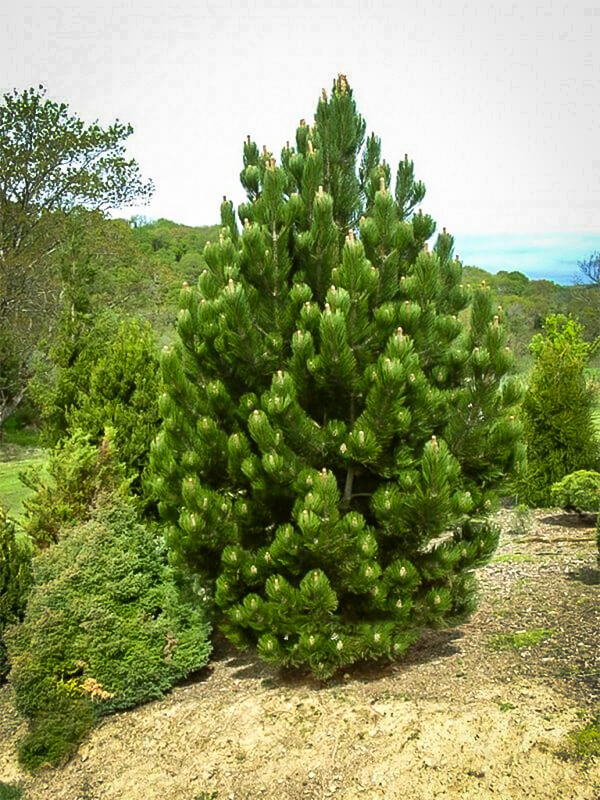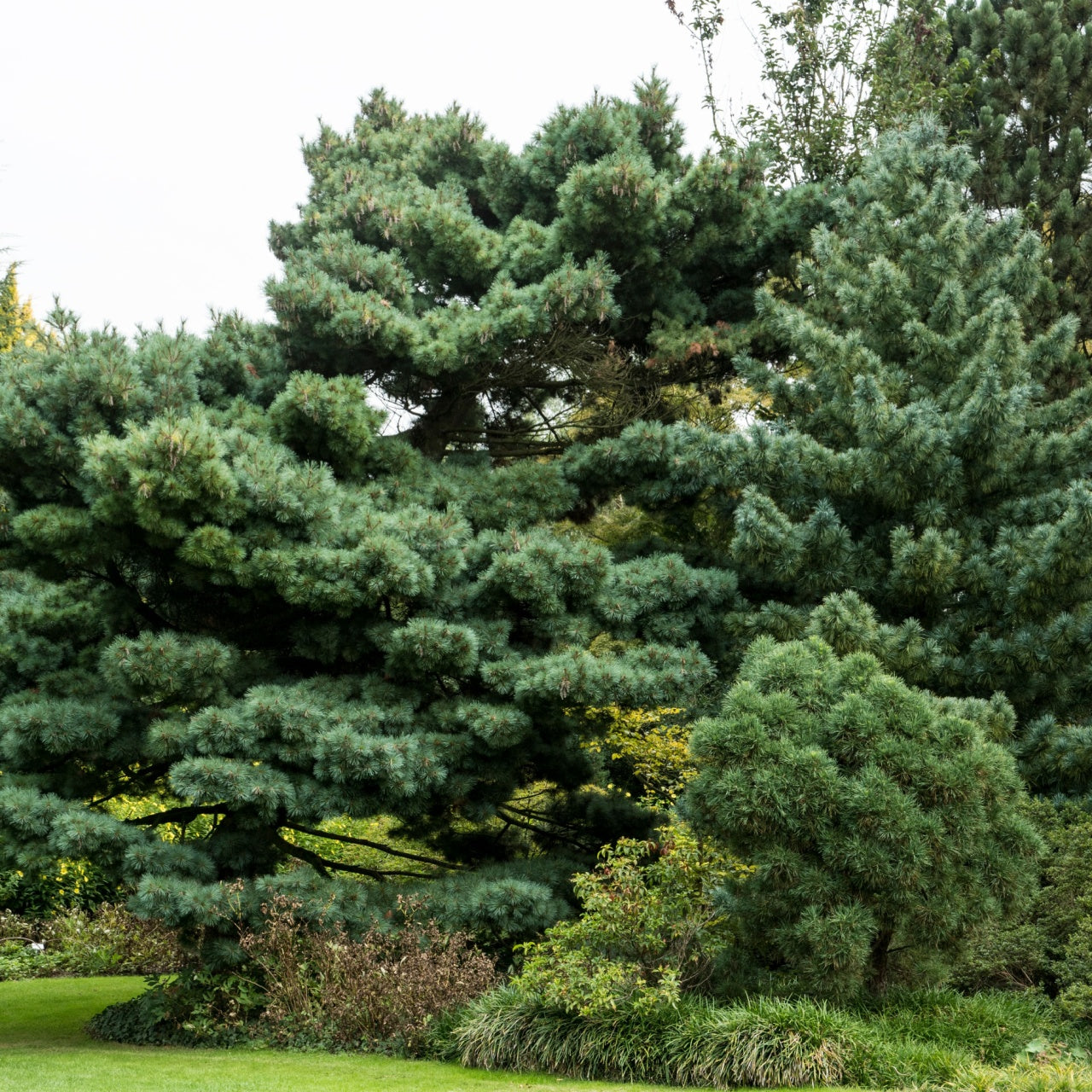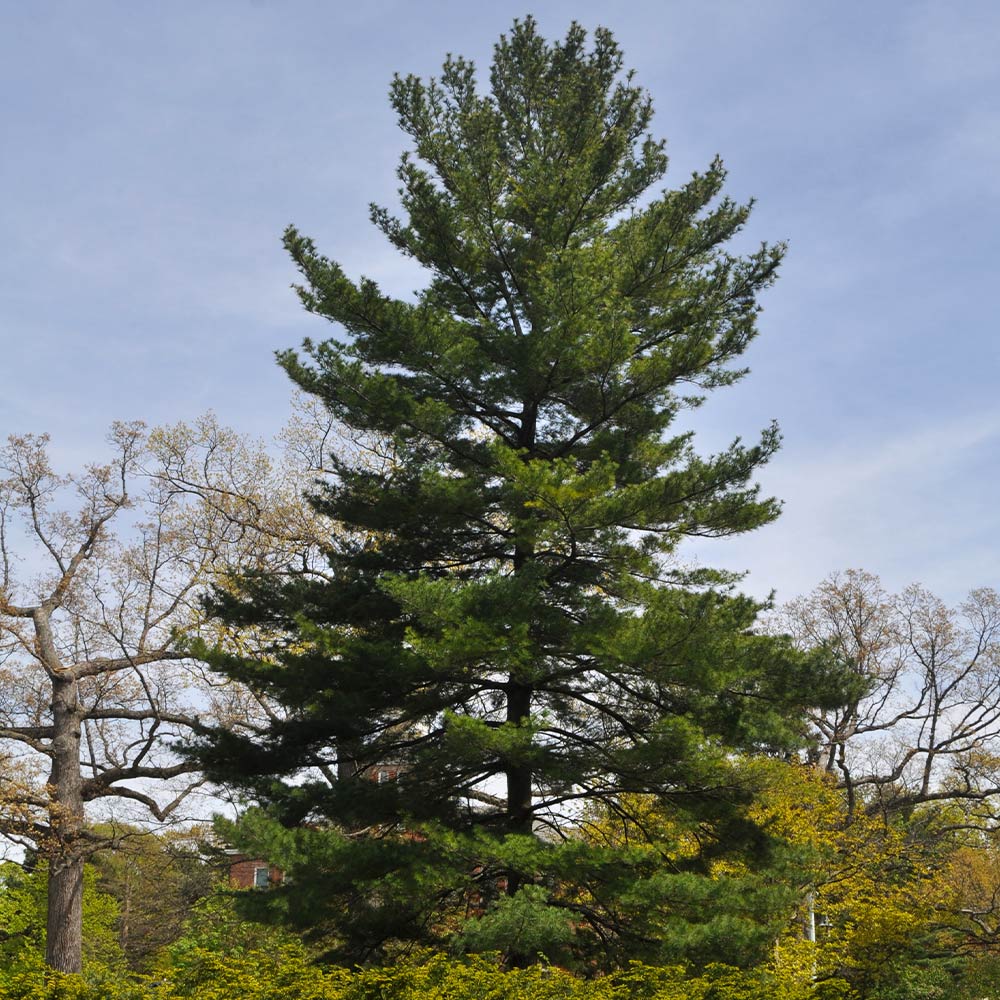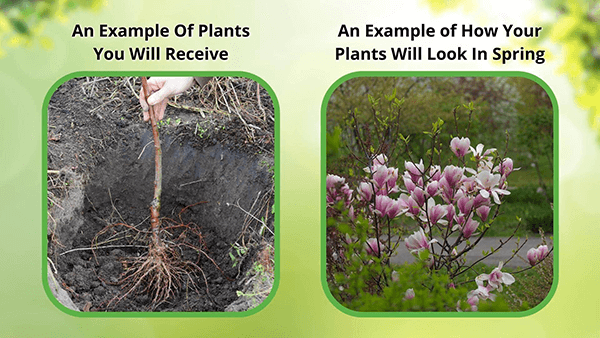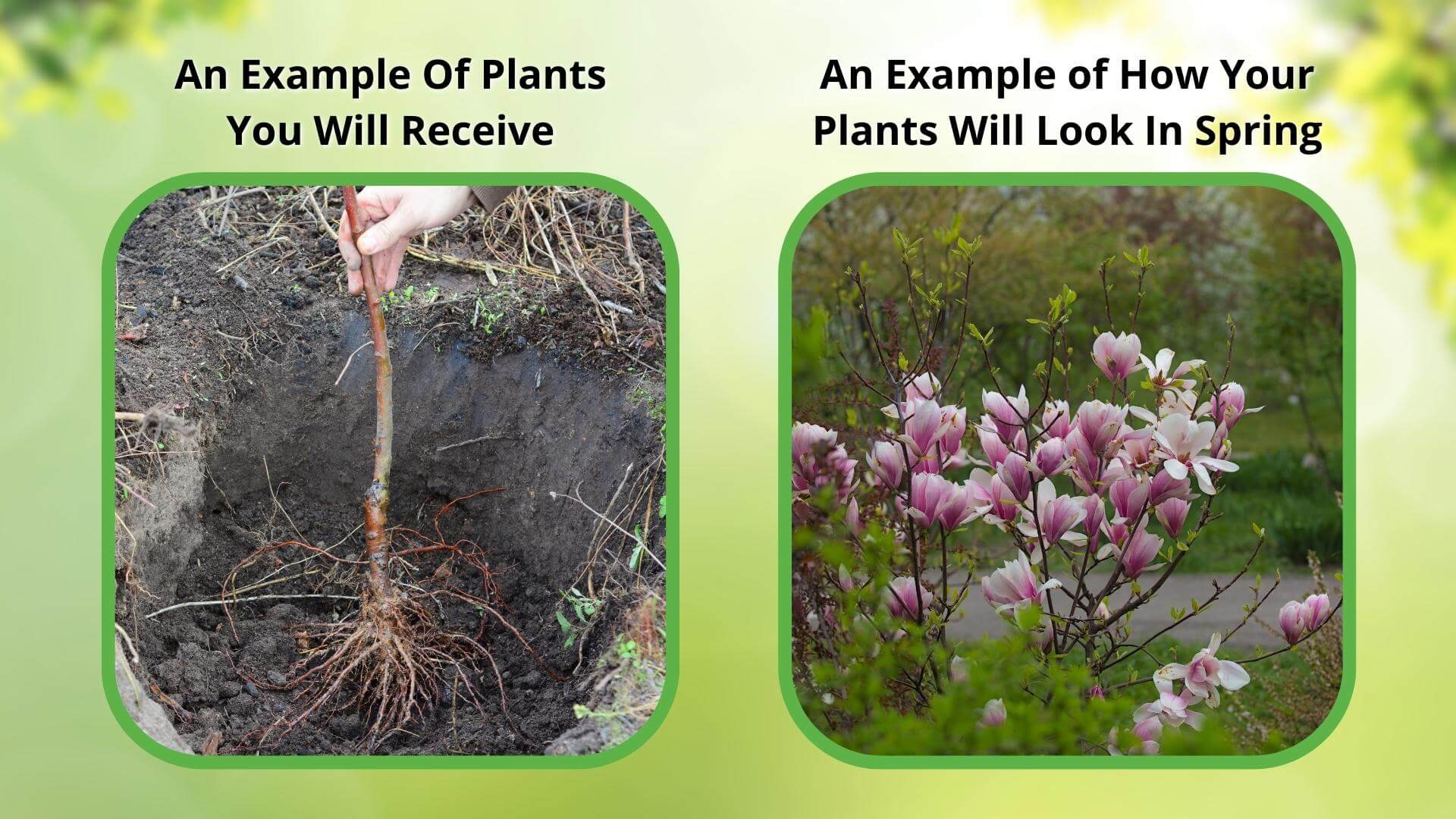White Pine Trees For Sale
White Pine Trees make beautiful living fence trees because their branches drape all the way to the soil's surface. They are super fast-growing and stay lush and green year-round, with a blue hue to their needles. White pine trees are tall native conifers that create a truly elegant sight. Their long, evergreen needles and pendulous cones make a great visual impact on the landscape and wildlife.
Plant Details-Pinus Strobus
Family: Pinaceae
Light Requirement: Full Sun
Water Needs: Moist
Height: 25 – 50 ft.
Spread: 20 – 35 ft.
Growth Rate: Fast
Bloom Time: Spring
Flower Color: Yellow
Wildlife Value: Attracts birds
Landscape Uses & Maintenance of White Pine Trees
The White Pine Tree is an evergreen conifer. Its beautiful needles are shaped like brushes, with very fine white streaks on the underside of the needle. Many generations will enjoy these graceful, long-lasting trees.
Over time, the bark will change in both color and texture, from gray and smooth to brown and rough. This beautiful conifer can handle full sun to partial shade. Avoid planting it in heavy shade, as its growth will be negatively impacted.
Give this tree moist, well-draining soil. Avoid planting it in heavily compacted or clay soil. Water it thoroughly until it is well established in its new forever location. This tree grows quickly, so if you want to create a natural living fence, this is a lovely evergreen option for all four seasons.
With the beauty of these tree branches, you will not need to do any sort of aesthetic pruning! However, take care to prune off any damaged, rubbing, or diseased branches yearly. When it is young, you can give this evergreen conifer a balanced fertilizer to improve its overall health and development. Mature trees will not need fertilizer.
Keep an eye on this tree for any signs of insect habitation, including weevils or borers: the faster you catch their presence, the easier it is to get rid of them!
Noteworthy Characteristics of White Pine Trees
The White Pine Tree will attract plenty of wildlife to your property, including birds and mammals. It's environmentally friendly and super hardy, being a native tree that is disease and pest resistant. You can use its fallen needles as mulch or replace them with a layer of mulch or compost.
